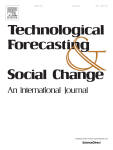The persuasive power of direct solicitation or compliance-gaining techniques in the donation context has been undervalued, as the face-to-face solicitation of money for charity is adopted less by charitable organizations than campaigns employing mass communication channels because of cost and efficiency (Arpaci et al., 2022). Although fundraisers acknowledge the effectiveness of direct solicitations, restraints of time, space, and labor have limited the adoption of direct solicitation techniques, such as the legitimization of paltry favors (LPF), which is effective only in face-to-face interactions (Andrews et al., 2008). However, the rise of virtual agents and the metaverse environment–a digital platform for virtual interaction (Mian et al., 2022)–opened a new avenue for charities and direct solicitation strategies. Leading charities, such as Great Ormond Street Hospital Children’s Charity and WaterAid, are already transitioning to the metaverse, raising billions of dollars from global donors and preparing for a new phase of fundraising through immersive online experiences (France, 2023).
This study focuses on LPF, a compliance-gaining technique that makes giving less difficult or avoidable by legitimizing a small amount of donation (e.g., “Even a penny will help!”; Cialdini and Schroeder, 1976). Studies have found that the LPF effect requires face-to-face social interactions or dialogue between requesters and potential donors, which is why the need for face-to-face social interactions has been highlighted in the realm of fundraising despite the evolution of communication technology (Andrews et al., 2008; DeJong and Oopik, 1992; Dolinski et al., 2005). After the development of artificial intelligence (AI) and virtual spaces, scholars and experts have both anticipated and questioned the role of AI agents in replacing human interactions. A group of studies represented by the theory of social response and the computers are social actors (CASA) paradigm found that virtual agents simulate social interactions and hence yield positive interaction outcomes (e.g., donation willingness, compliance intention, satisfaction) without the help of human-to-human interactions (Lee et al., 2023a; Namkoong et al., 2023; Nass and Moon, 2000; Moon, 2000; Park et al., 2023a; Park et al., 2023b; Park et al., 2023c; Reeves and Nass, 1996). Another group of studies represented by the concepts of expectation violation and uncanny valley effect, however, still question the effectiveness of artificial social intelligence, pointing out that the role of social AIs is still limited and requires further investigation in the realm of persuasion and compliance-gaining (Go and Sundar, 2019; Mori et al., 2012; Lee et al., 2023b; Lee et al., 2024; Park et al., 2023d). Moreover, to our knowledge, no study has examined LPF in the context of fundraising in the metaverse, which we argue is crucial to enhance the understanding of human-AI interactions in the metaverse. We also argue that more studies should be performed to clarify the scope and limits of AI agents while the environment for human-AI interaction is transforming to better simulate the real world.
To add to the efforts, this study argues that it is necessary to replicate traditional compliance-gaining theories such as LPF and investigate the psychological mechanism behind the effect of AI fundraisers on willingness to donate (WTD) to compare the similarities and differences between LPF’s mechanism in human-human interactions and human-AI interactions in the metaverse. Therefore, based on the CASA paradigm, the LPF literature, and the notions of self-presentation goals and impression management in altruism and philanthropy, this study proposes a moderated parallel mediation model with parallel mediators of self-image concern and guilt (Andrews et al., 2008; Bolkan and Rains, 2017; Cialdini and Schroeder, 1976). Furthermore, this study explores the moderated parallel mediation relationship between LPF and WTD by examining the moderating role of victim identification based on the notion of identifiable victim effect (IVE) that points out the distinct effects of the presentation of identifiable victims (presenting personal information about an individual victim such as face, age, and the situation that they are facing) versus statistical victims (presenting general information about a victim group; Lee and Feeley, 2018). More specifically, based on IVE, this study argues that a single identified victim with a virtual avatar, description, and name yields greater emotional reactions and aid than the statistical description of anonymous victims (Lee and Feeley, 2018). Hence, this study proposes that victim identification strengthens the direct and indirect relationships among LPF, self-image concern, guilt, and WTD.
To examine the moderated parallel mediation model, we developed four metaverse interactions (LPF: absent vs. present × IVE: statistical vs. identified). The study findings have several theoretical and practical implications, including 1) expanding the applicability of LPF in the metaverse, 2) demonstrating the interaction effect between LPF and IVE, 3) revealing the role of parallel mediators (self-image and guilt), 4) providing suggestions for the design of a metaverse environment, and 5) suggesting an alternative to face-to-face interactions with human fundraisers, which can be costly and limited.
This news is republished from another source. You can check the original article here

